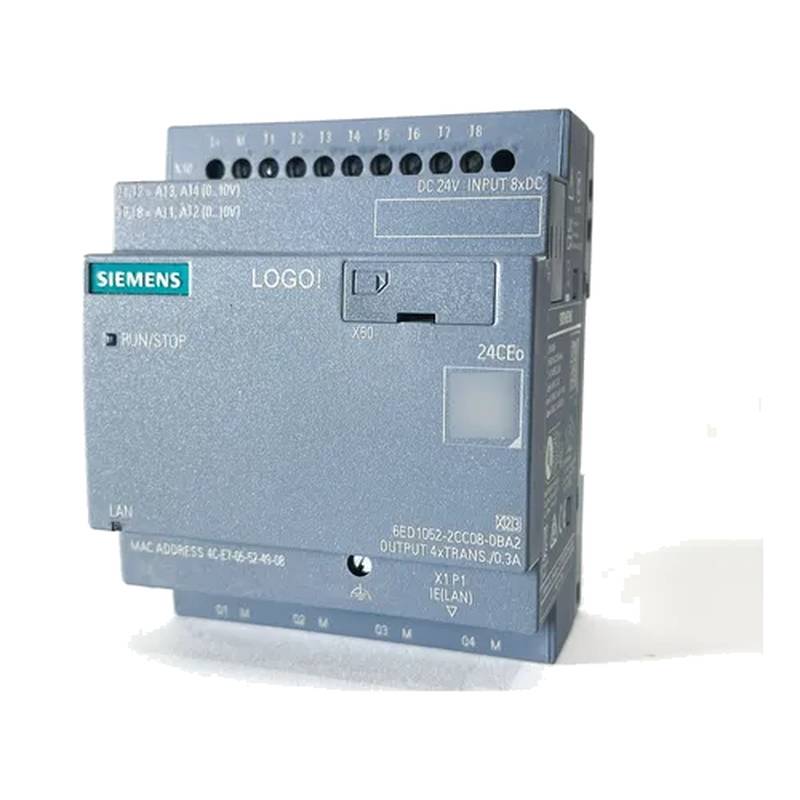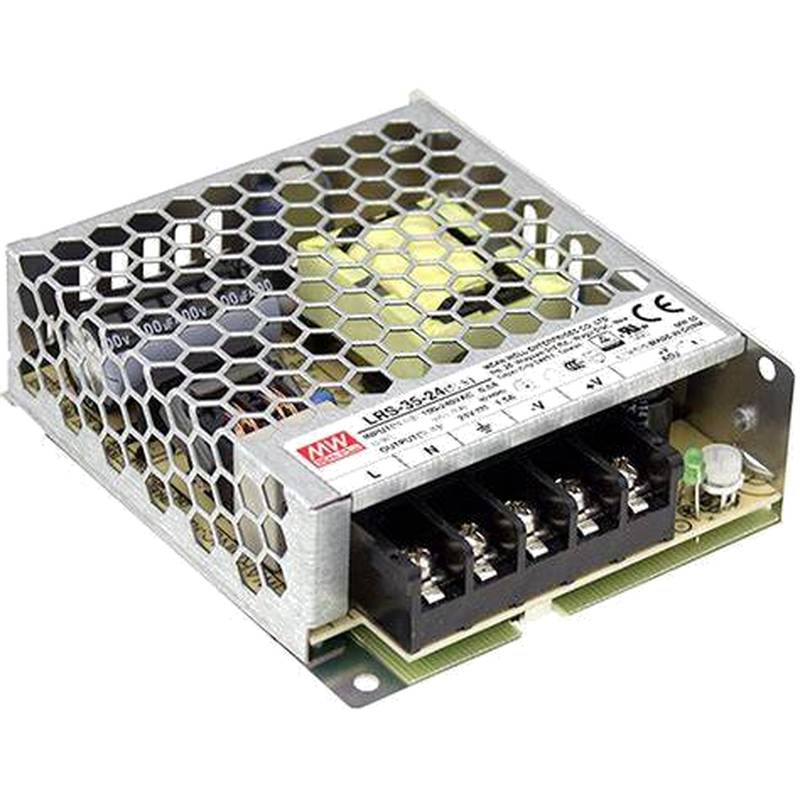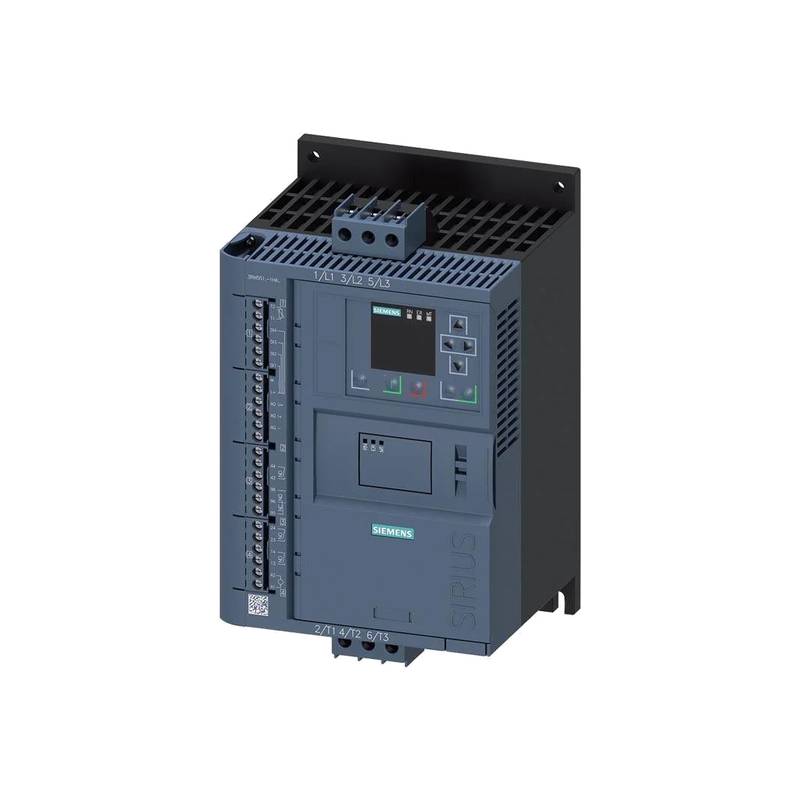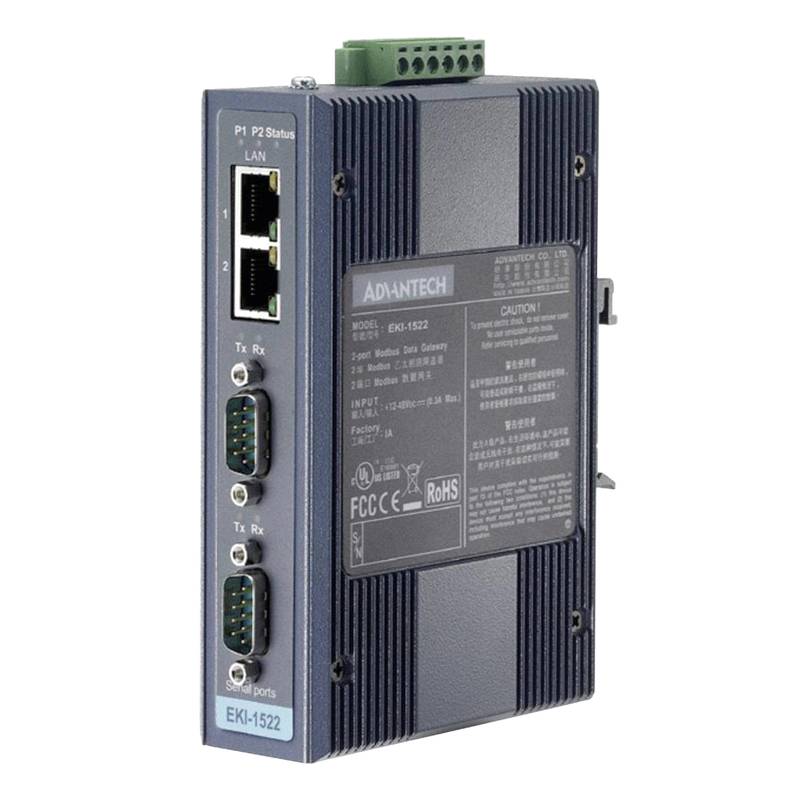
The Advantech EKI-1511-A 1-Port Industrial Serial Device Server provides a robust solution for integrating legacy serial devices into modern Ethernet networks. This compact and reliable device server offers a vital bridge, enabling seamless data communication between RS-232/422/485 interfaces and 10/100 Mbps Ethernet networks. Its key advantages lie in its industrial-grade design, versatile serial interface support, and straightforward configuration, making it an ideal choice for extending the reach of critical automation and control systems. The EKI-1511-A boasts an operating temperature range of -40 to 75°C and supports a wide input voltage range of 12-48 VDC, ensuring dependable performance in harsh industrial environments. It utilizes a TCP/IP protocol stack and supports various network modes including TCP Server, TCP Client, UDP, and Pair Connection, offering flexibility in network deployment.
Product Specifications
| Feature | Specification |
| :--------------------- | :------------------------------------------- |
| Ethernet Port | 1 x 10/100 Mbps (RJ45) |
| Serial Port | 1 x RS-232/422/485 (DB9 Male) |
| Serial Data Bits | 5, 6, 7, 8 |
| Serial Parity | None, Even, Odd |
| Serial Stop Bits | 1, 2 |
| Serial Baud Rate | 300 bps to 115.2 Kbps |
| Protocol Support | TCP/IP, UDP, DHCP, DNS, HTTP, ARP, ICMP |
| Network Modes | TCP Server, TCP Client, UDP, Pair Connection |
| Input Voltage | 12-48 VDC |
| Power Consumption | 1.5 W |
| Operating Temperature | -40 to 75°C |
| Dimensions | 70 x 95 x 25 mm |
| Mounting | DIN-rail, Wall mount, Desktop |
Core Features & Market Positioning
The Advantech EKI-1511-A distinguishes itself through its industrial-grade construction and comprehensive serial interface compatibility. Unlike many consumer-grade converters, the EKI-1511-A is engineered for continuous operation in demanding conditions, featuring a robust metal casing and a wide operating temperature range. Its ability to support RS-232, RS-422, and RS-485 on a single port via software configuration simplifies deployment and reduces inventory needs for system integrators. The device's support for multiple network modes (TCP Server, Client, UDP, Pair Connection) offers significant flexibility, allowing it to integrate into diverse network architectures and existing control systems. This versatility positions the EKI-1511-A as a superior choice for applications requiring reliable serial-to-Ethernet conversion where standard solutions fall short.
Key Application Scenarios
This industrial serial device server is indispensable in numerous industrial automation contexts. It is frequently deployed to connect legacy PLCs, SCADA systems, industrial sensors, and meters that rely on serial communication to a centralized Ethernet network for monitoring and control. Applications in manufacturing plants, such as connecting machine tools or environmental monitoring equipment, benefit from the EKI-1511-A's reliability. In the energy sector, it facilitates remote access to substations and distributed energy resources. Furthermore, its compact size and flexible mounting options make it suitable for building automation, traffic control systems, and any scenario requiring the extension of serial device connectivity over longer distances via an IP network.
Practical System Integration Guidance
Integrating the Advantech EKI-1511-A is a streamlined process, typically involving hardware installation and network configuration. The device supports DIN-rail, wall, and desktop mounting, allowing for flexible placement within control cabinets or on work surfaces. Wiring involves connecting the serial device to the DB9 connector and the Ethernet network to the RJ45 port. Power is supplied via a 12-48 VDC input. Configuration is managed through Advantech's Device Discovery utility or a web-based interface, enabling users to set IP addresses, select network modes, and configure serial parameters such as baud rate, data bits, parity, and stop bits. The "Pair Connection" mode is particularly useful for creating a transparent serial-to-serial bridge over Ethernet, ideal for two serial devices needing to communicate without a host computer.
Operation and Risk Mitigation
Operating the Advantech EKI-1511-A is designed to be plug-and-play after initial configuration. Users should ensure correct serial port settings (baud rate, data bits, parity, stop bits) match the connected serial device to prevent communication errors. In harsh environments, securing the connections and ensuring proper ventilation, despite the device's wide temperature tolerance, is advisable to prolong lifespan. Power supply stability is critical; utilizing a regulated 12-48 VDC source with appropriate surge protection mitigates risks associated with voltage fluctuations. Should communication fail, common troubleshooting steps include verifying IP connectivity, checking serial cable integrity, confirming serial port settings on both the device server and the connected serial device, and ensuring the selected network mode is appropriate for the application. While specific fault codes are not typically displayed, status LEDs on the unit indicate power, Ethernet link/activity, and serial port status.
Scalability & Long-Term Value
The Advantech EKI-1511-A offers significant long-term value through its compatibility and potential for integration into larger Industrial Internet of Things (IIoT) frameworks. Its standard Ethernet connectivity allows it to be easily incorporated into existing IP-based plant networks and managed by network infrastructure. For applications requiring more serial ports, Advantech offers a range of multi-port serial device servers, allowing for scalable expansion. The EKI-1511-A's ability to expose serial data over standard TCP/IP protocols makes it a foundational component for modernizing legacy equipment, enabling remote data acquisition and management, and paving the way for predictive maintenance and advanced analytics solutions. Its robust build quality ensures a long operational life, minimizing the need for frequent replacements.
Frequently Asked Questions
1. How do I configure the Advantech EKI-1511-A for network access?
Advantech provides a utility to discover the device on the network. You can then access its web interface for full configuration. This allows setting the IP address, subnet mask, and gateway.
2. What serial protocols does the EKI-1511-A support?
It supports RS-232, RS-422, and RS-485 serial interfaces. The specific protocol is selectable via software configuration.
3. Can I use the EKI-1511-A to connect two serial devices over Ethernet?
Yes, the "Pair Connection" mode is designed for this. It creates a transparent serial-to-serial tunnel over the Ethernet network.
4. What are the power requirements for the EKI-1511-A?
It requires a DC power input, typically between 12 and 48 volts. Ensure your power supply is stable and within this range for optimal performance.
5. How is the EKI-1511-A physically mounted in an industrial setting?
The device supports DIN-rail mounting, wall mounting, and desktop placement. This offers flexibility for installation in various control cabinets and environments.
6. What is the maximum baud rate supported by the EKI-1511-A?
The device supports serial communication speeds up to 115.2 Kbps. This is sufficient for most industrial serial communication needs.
7. Does the EKI-1511-A support remote firmware updates?
Firmware updates can typically be managed through Advantech's management tools. This allows for future enhancements and security patches.
8. How do I troubleshoot communication issues with the EKI-1511-A?
Check physical connections, verify IP and serial settings, and ensure the correct network mode is selected. LEDs on the unit provide status indicators.
9. What industrial environments is the EKI-1511-A suitable for?
Its wide operating temperature range (-40 to 75°C) and robust design make it ideal for harsh industrial settings. Consider power surge protection for critical applications.
10. Can the EKI-1511-A be integrated into IIoT platforms?
Yes, by converting serial data to standard IP protocols, it readily integrates with IIoT gateways and cloud platforms for data analysis.
























